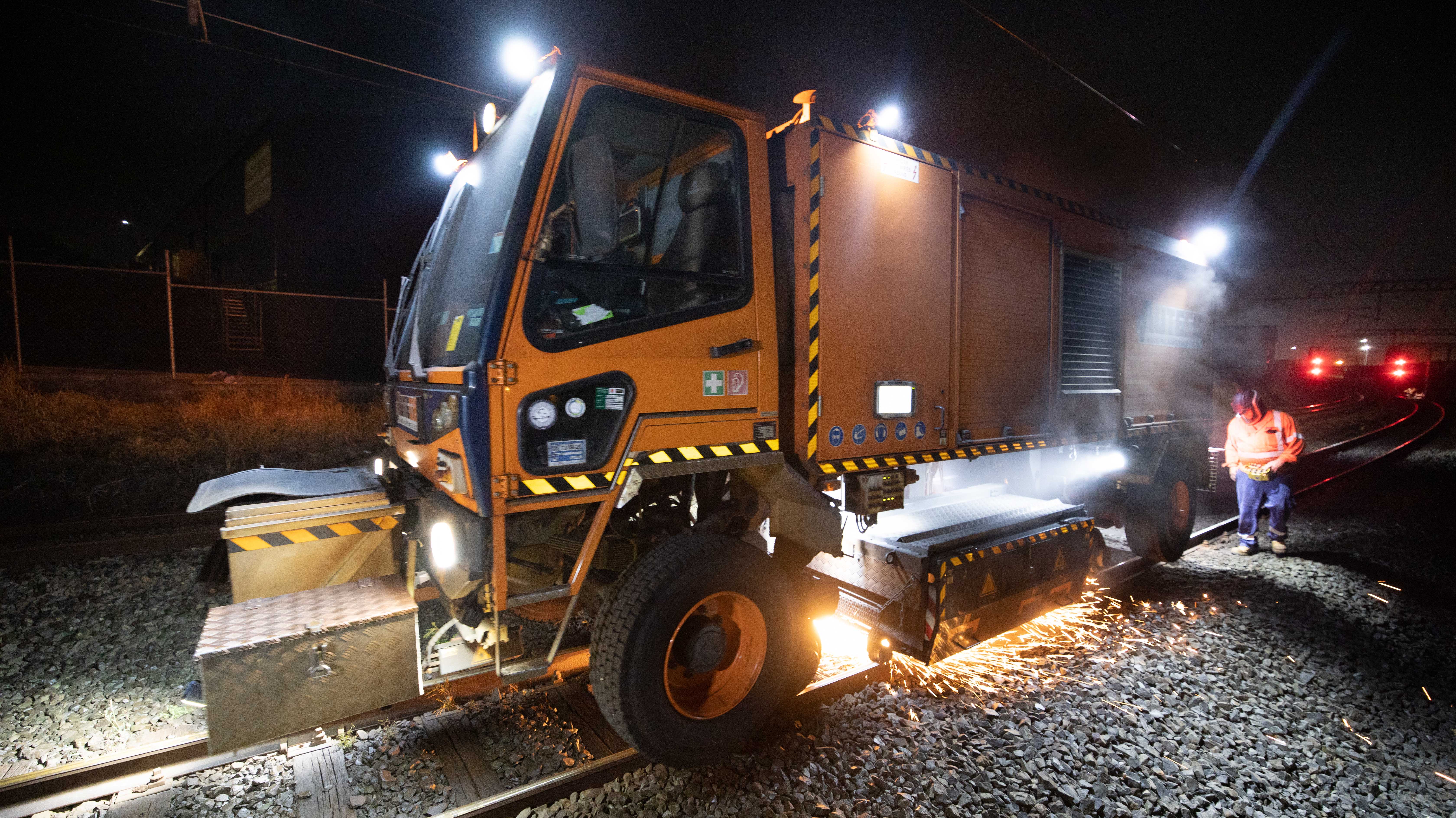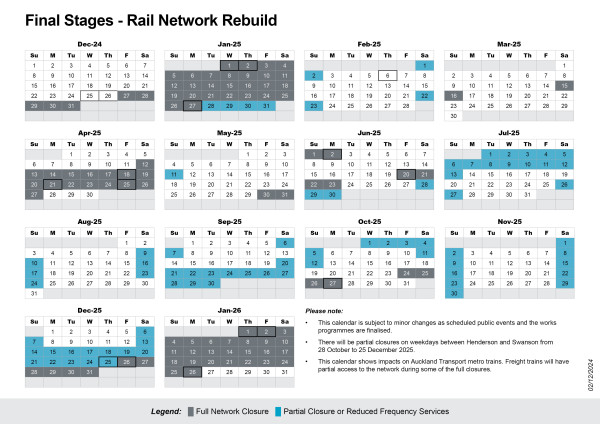Rail Network Rebuild
Through the final stages of the Rail Network Rebuild (RNR), KiwiRail is delivering critical network upgrades before City Rail Link (CRL) opens in 2026. These will support shorter journey times, fewer delays and trains every 4-5 minutes at peak.
The rebuild replaces old foundations under tracks and upgrades drainage, allowing more reliable train journeys and a more resilient network that is ready for CRL.
The RNR teams are removing existing rail and digging down up to a metre to replace the aging rock foundations under the tracks, replacing ballast and upgrading drainage to improve the network’s performance in weather events.
The final stages of RNR complete our upgrade of priority areas across the network, enabling an efficient rail network that can accommodate the increased level of services that comes with CRL.
Additional government funding provided in the latest Budget allows us to plan with certainty to deliver additional upgrades on the rail network. These are essential to enable the faster, more frequent journeys that CRL and the other major projects we are delivering will bring.
We also received further funding for upgrades to the Auckland network. These two funding pots are being wrapped into one delivery programme under RNR – to ensure the most effective and efficient delivery of the programme.
How the work will be delivered
Most of RNR's final stages is being delivered in extensions to scheduled rail closures. Train services are typically suspended during major holidays so our teams can safely work on the tracks and inside tunnels.
This included four weeks over Christmas 2024 and two weeks in April 2025. Partial network closures are scheduled for the June-July and September-October school holidays, and a closure is likely for Christmas 2025 and some shorter periods too. There is also some contingency allowed throughout the programme for unexpected events.
We know it’s vital to get the most out of these closures. That’s why we will be working 24-7 wherever possible. The Rail Network Rebuild is delivering a decade’s worth of work over 18 months - ultimately this will enable more efficient and faster train services. We thank commuters, passengers and freight customers for their patience with these disruptions as we safely deliver the huge amount of work.
This approach means relatively short sharp closures and less ongoing disruption when passengers and freight suppliers need the network most.
Keeping trains running
We are working with Auckland Transport (AT) to retain weekday peak services whenever possible so Aucklanders can rely on the train for their weekday routines. This means, outside major holiday periods, rail closures will usually be at weekends or evenings, with school holidays kept as contingency to support the upgrades being delivered on time.
Together we are focused on delivering this work as effectively and efficiently as possible to reduce disruption to rail customers. We aim to keep trains running for as many people and goods as possible, as often as we can. But there will be times when we must close the network so our teams can work safely and to get work done more quickly.
To find out more about public transport options during these works, customers can visit AT’s Journey Planner or to the AT Mobile app.
Customers can also view the train line status page on the AT website.
Find out where our teams are working and what we are doing here.
Rail Network Rebuild related documents proactively released under the Official Information Act.
KiwiRail Key Auckland Upgrade Projects
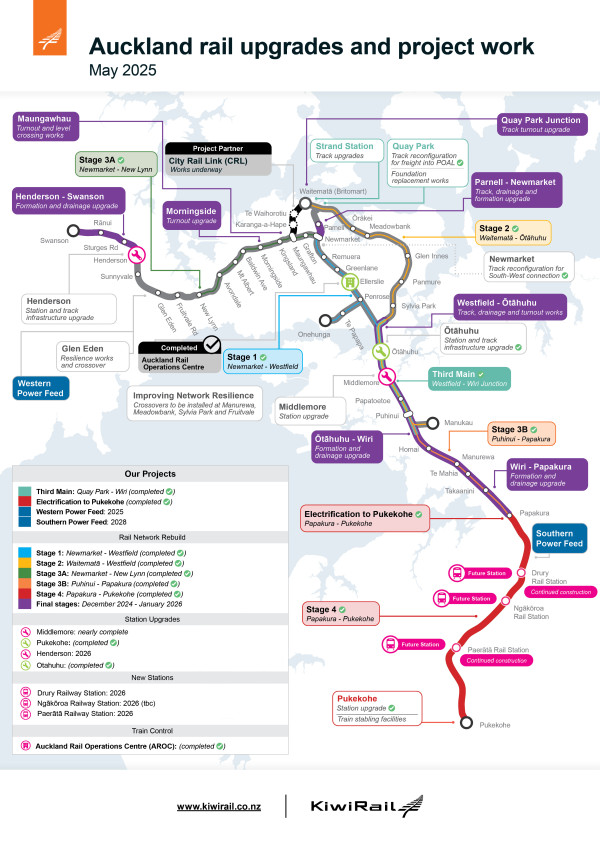

Completed work: Papakura to Pukekohe
Full upgrade and renewals works were completed over 2024-25 summer rail closure while the line was closed for electrification. The newly electrified 19km of rail line between Papakura and Pukekohe is now open. Electric passenger trains are now running all the way to the city centre with no need to change trains at Papakura.
Final stages - Wiri to Papakura
The focus of ongoing RNR works is mostly on priority areas of the Southern Line between Wiri and Papakura, including upgrading and renewing rail infrastructure around the Te Mahia, Homai and Takanini train stations.
Later in the year, RNR teams will also be working on sections between Newmarket and Waitematā (Britomart) and on the Western Line between Newmarket and Avondale, and between Henderson and Swanson.
What we are doing
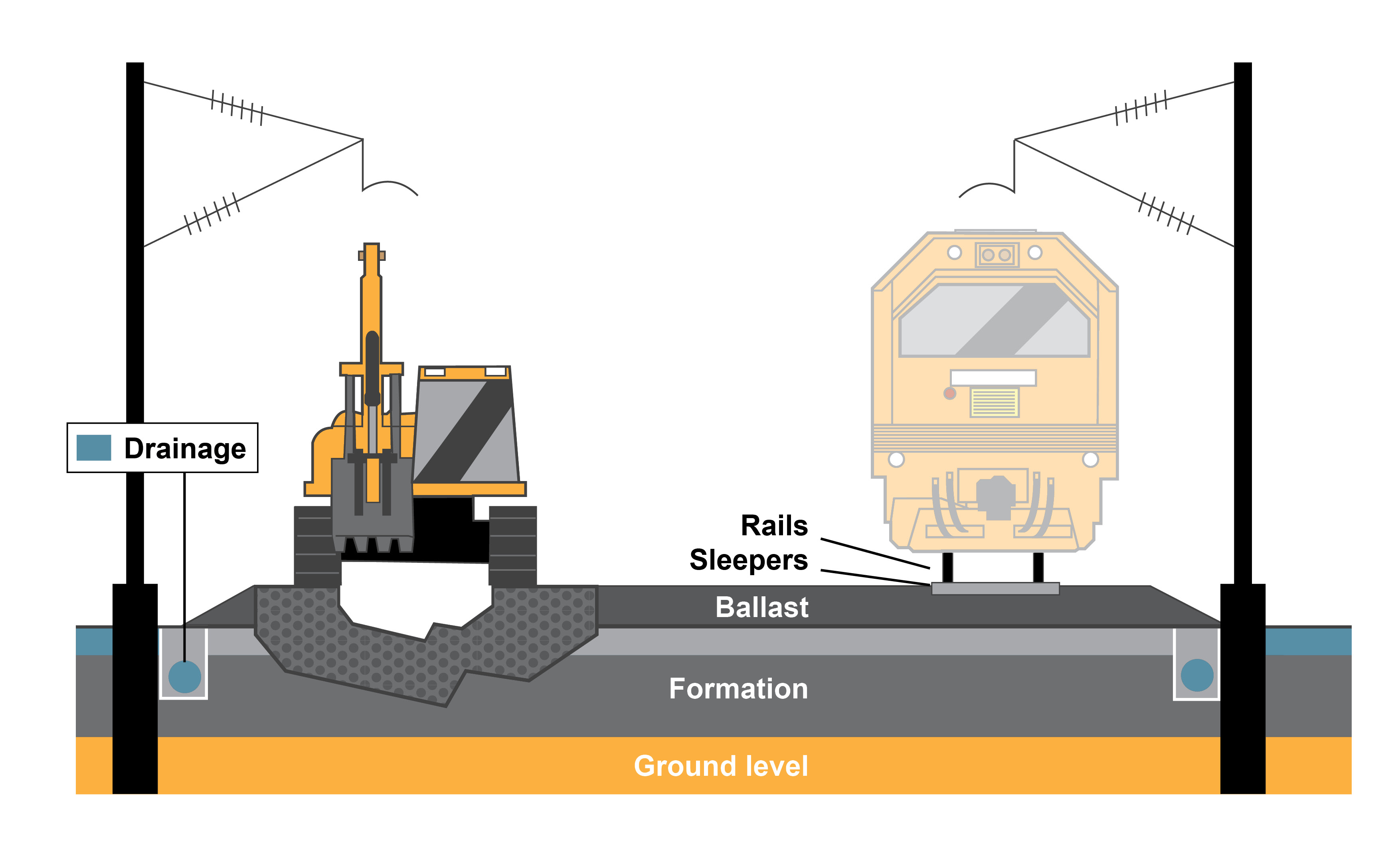
The Rail Network Rebuild is challenging work:
- Rail lines, sleepers and turnouts (which allow trains to switch between tracks) lifted away
- Existing foundations (compacted gravel that forms the base of the rail line) and ballast (the rocks the tracks sit on) dug out
- New foundations brought in and compacted to form a firm and resilient base
- New ballast brought in and compacted
- New drainage to prevent future deterioration of foundations
- The rails, sleepers and turnouts put back, aligned for safe and smooth train running.
This video shows how we replace the foundations under rail tracks.
Wherever possible we’ll also do proactive maintenance – such as replacing sleepers and trimming vegetation that would otherwise need to be dealt with in the coming years – and using the line closures to complete other rail related projects.
All railways require ongoing maintenance but we are planning ahead and trying to avoid the need to come back and cause further disruption in the future.
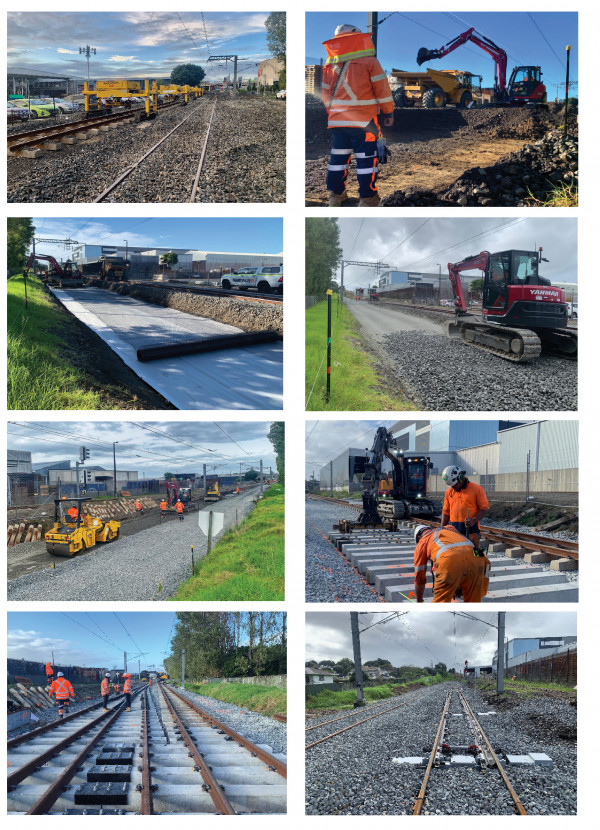
These photos illustrate some of the different types of work that go into the Rail Network Rebuild (RNR) .
This work removes rail and digs out the original formation (foundation), adds stabilizing mesh, puts in and compacts new formation, then replaces the rails, sleepers and ballast. This example at Sylvia Park includes adding a new crossover, which will improve flexibility on the network.
Using technology to get the job done quickly
To renew formation quickly, KiwiRail is using a range of specialist machines and technology. These include:
Panel lifter
The panel lifter can pick up and put down up to 75 metres of straight sections of track and sleepers at a time.

Stabiliser
Stabilisers shake and consolidate the track formation, to ensure new formation is stable.
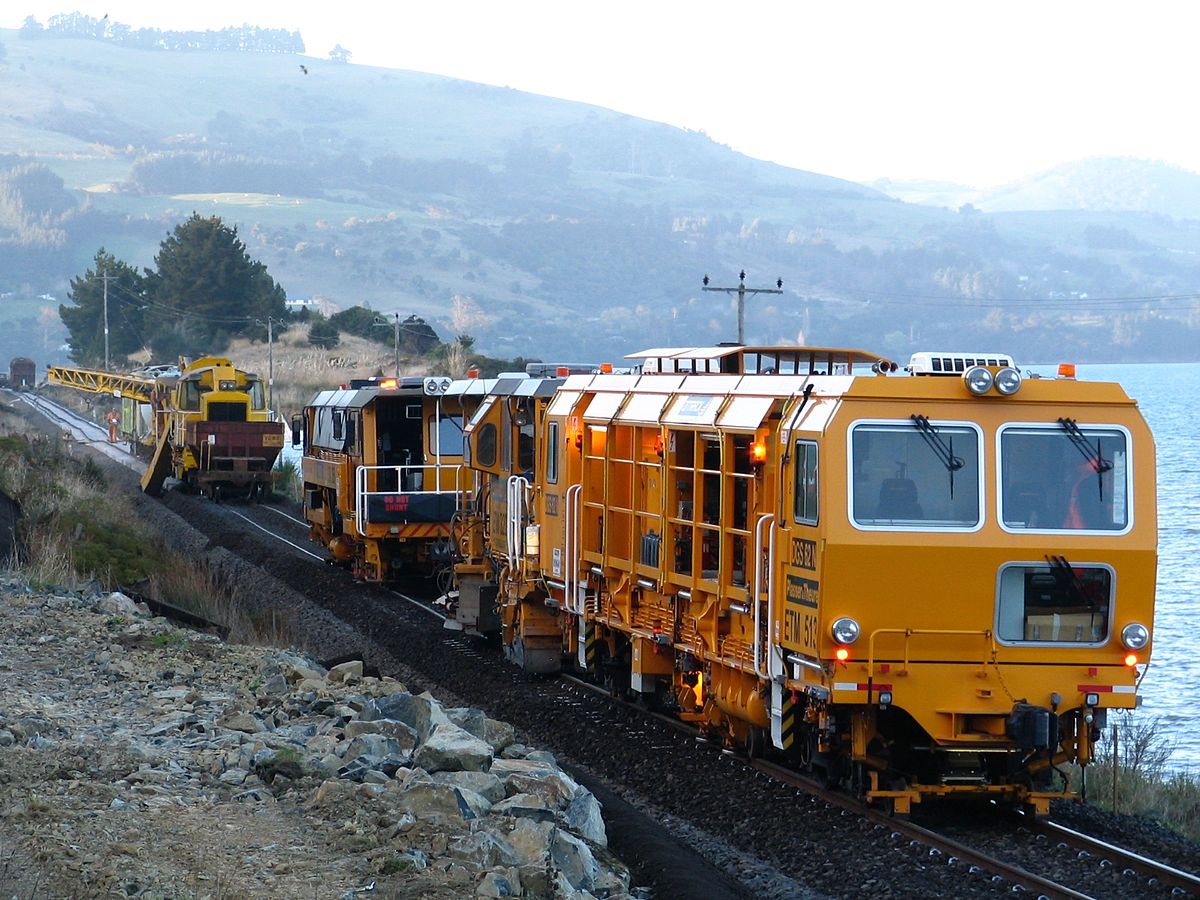
Tamper
Tamper machines measure the track placement, lift it, and pack the ballast underneath to hold it in place. It helps create a smoother ride for passengers and freight.
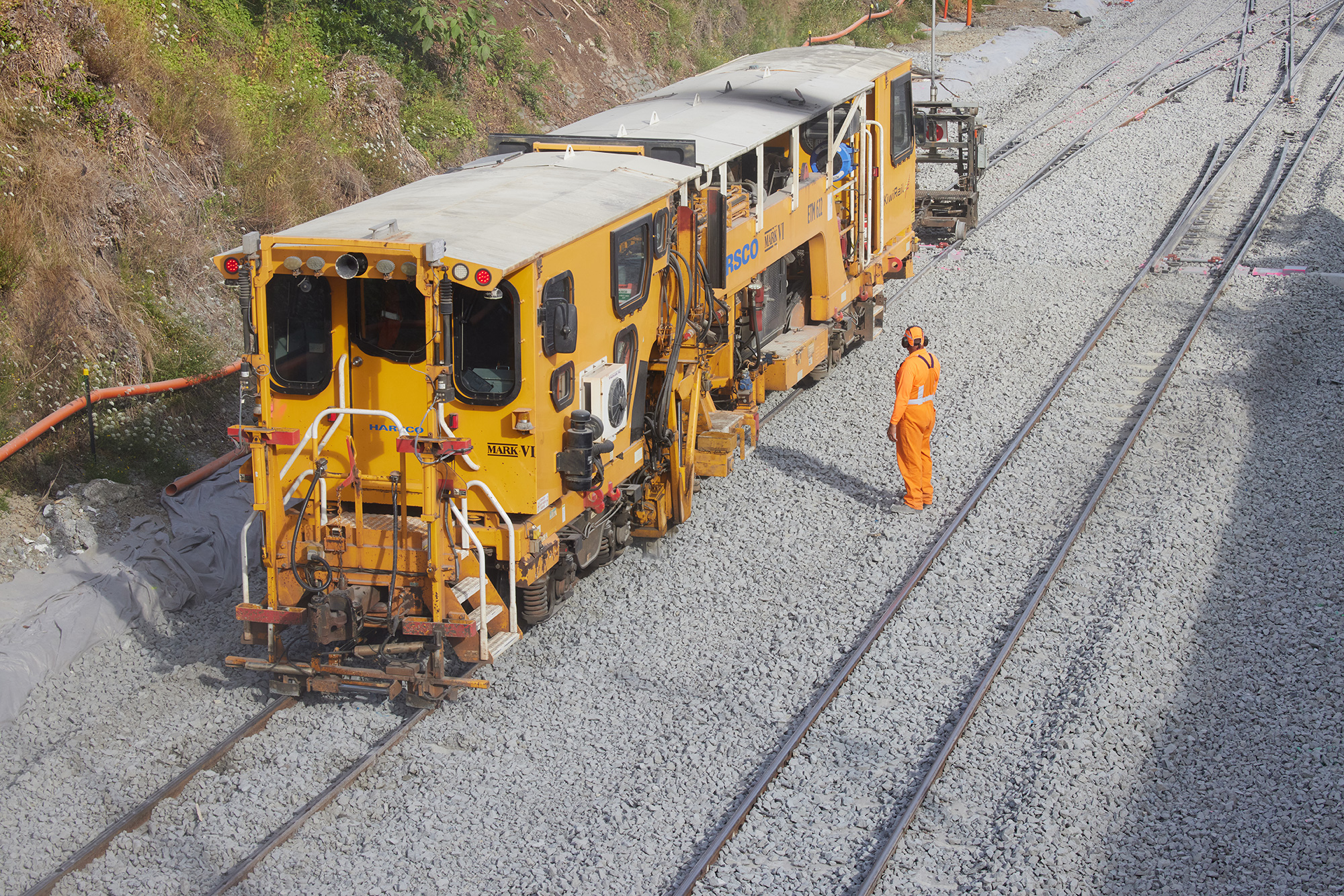
Rail grinder
Rail grinders smooth irregularities in the tracks and restore their profile, so they last longer. It also helps to improve the ride for passenger and freight services.
